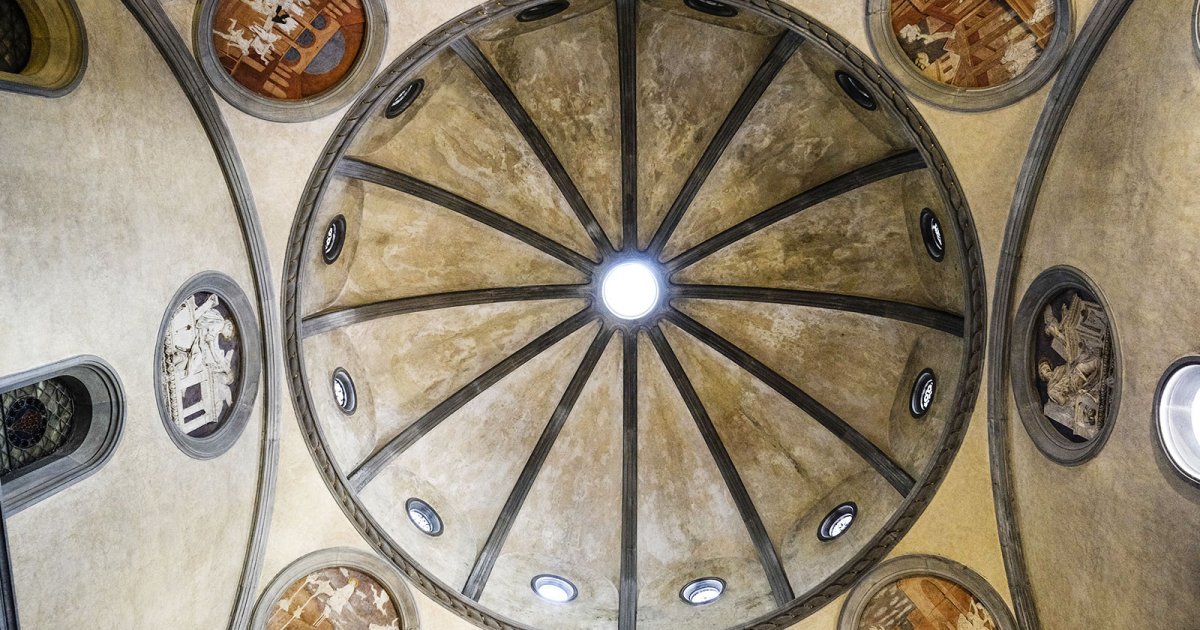SAN LORENZO, Old Sacristy
 Language: English / USA
Language: English / USA
The entrance to the Old Sacristy built in the first decades of the 15th century is on the left side of the church in the back. Keep in mind that the great Filippo Brunelleschi was a different type of architect than those who preceded him: he was no longer a foreman facing practical problems, but an intellectual who designed and constructed buildings that were entirely thought out beforehand, and were designed in a serene and grandiose fashion that was both rational and poetic. For the first time, a religious building was not forced to have the "divine" proportions of the Gothic cathedrals, and has a more human dimension here.
The sacristy is a square-shaped room covered by an umbrella dome. And considering how the height is equal to the width, you are standing in a perfect cube covered by the equally harmonious geometry of the sphere-shaped dome. As you can see, a square compartment opens up on one of the sides; if you look closely you'll realize that it's an exact reproduction of the sacristy itself on a smaller scale: it exactly corresponds to a ninth of the rest of the structure, and is also a cube covered by a dome.
You'll be struck by the simplicity and grandeur of its whole, which is the result of Brunelleschi's collaboration with Donatello, who saw to the interior decorations.
So get ready for some full immersion into Donatello's art: you'll see the eight multicolored stucco tondi located in the four clusters supporting the dome, the four large semi-circle lateral surfaces with the Evangelists and Episodes from the Life of St. John, two terracotta bas-reliefs with pairs of saints, and the bronze shutters of the two doors. Even the bust of San Lorenzo that you can see on the table is of course by Donatello.
On the left side you can instead see a modification added later on by Verrocchio, the Funeral Monument to Piero and Giovanni de' Medici, which was made in the second half of the 1400s in porphyry and bronze.
FUN FACT: the dome above the altar has a painted starry blue and gold sky; the position of the stars corresponds to that of the night of July 4th, 1442. Although various assumptions have been made, it is unclear what this date refers to.



